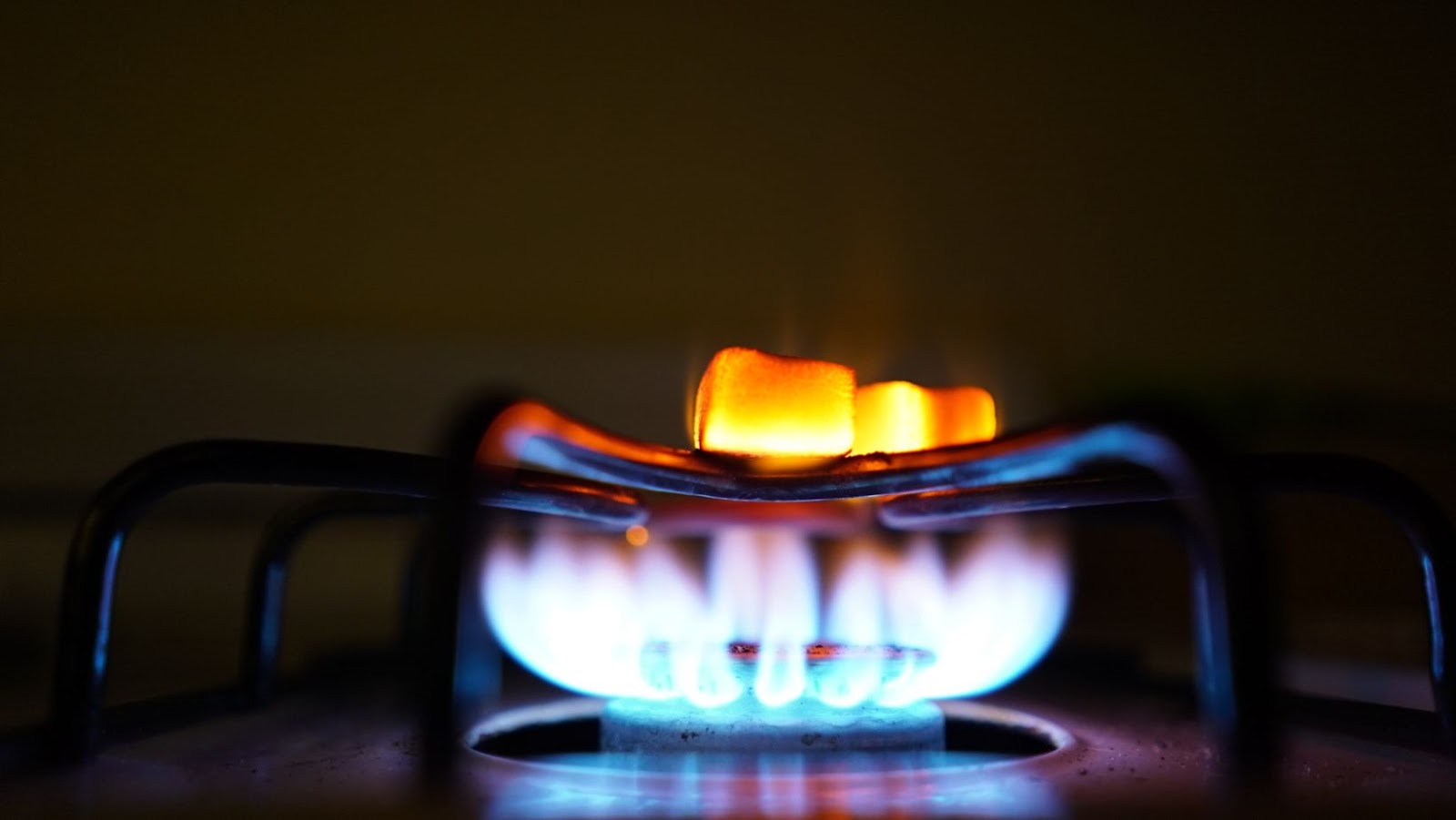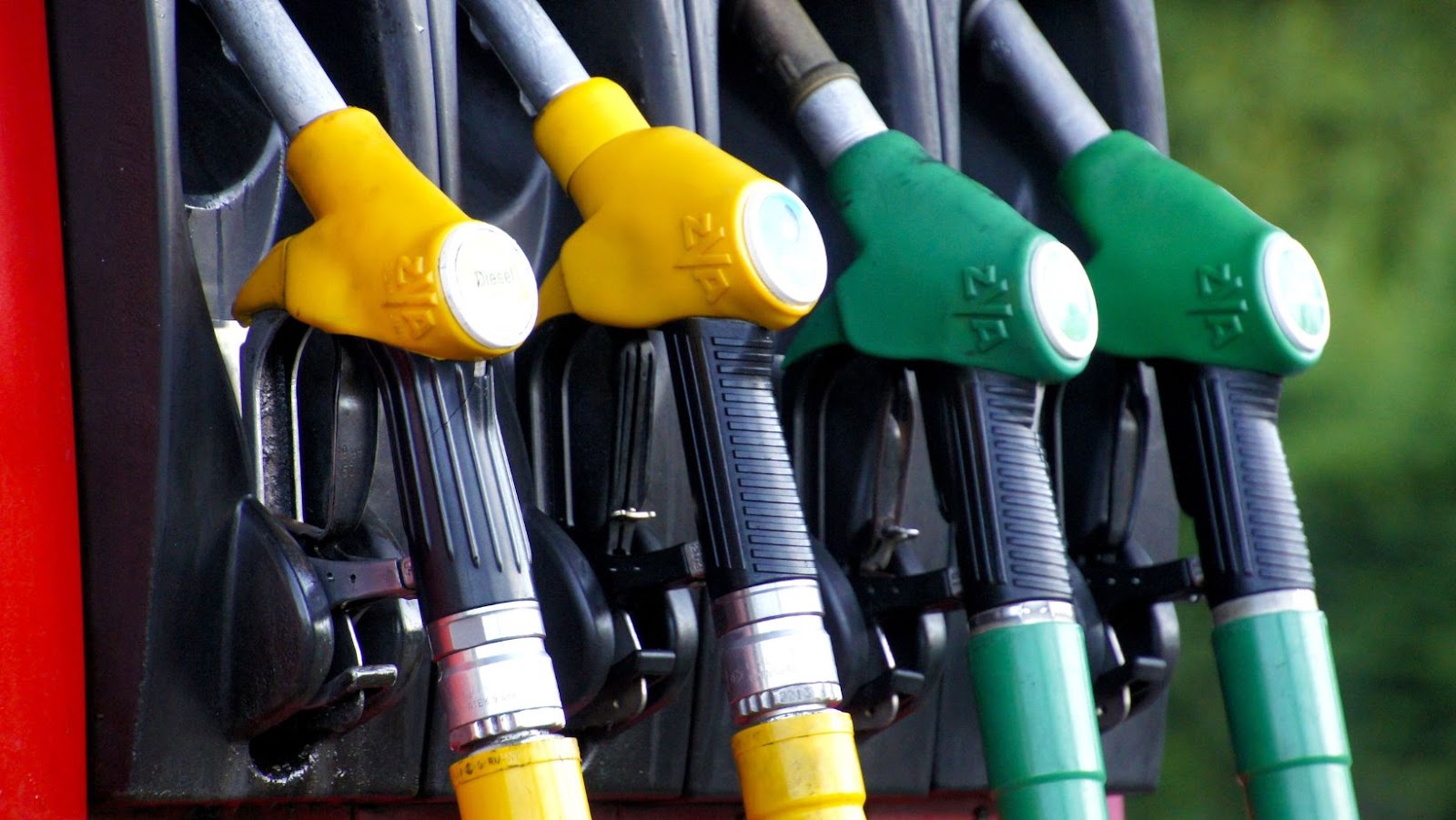The equipment must be regularly calibrated and tested regarding gas detector calibration requirements to ensure accuracy and safety. In this article, we will discuss the basics of why gas detector calibration is so important, as well as the various requirements for Calibration.
Importance of Calibrating Gas Detectors
Calibrating gas detectors are crucial for ensuring the accuracy and reliability of these devices when detecting hazardous gases. The calibration process is used to adjust the gas detector’s sensitivity and ensure that it sees gases within the acceptable range.
Gas detector calibration requirements may vary depending on the type of gas detector, the kind of gas being detected, and the manufacturer’s recommendations. Following the manufacturer’s instructions regarding calibration frequency is essential, as gas detectors not calibrated regularly can provide false readings, resulting in significant safety risks.
Regular Calibrating gas detectors provide peace of mind that the device is functioning correctly and will alert users to potentially hazardous gases. It also enables the early detection of malfunctions, ensuring that the device is fixed or replaced before any real danger occurs.
Properly calibrated gas detectors can help protect lives and property safe. Therefore, keeping up with gas detector calibration requirements is vital for a safer environment.
Calibration Frequency
Gas detector calibration frequency depends on various factors such as the type of gas detector, the sensor used, environmental conditions, and the accuracy required.
For instance, high-risk environments such as mines and oil rigs require frequent Calibration to ensure workers’ safety. Similarly, gas detectors used in confined spaces like sewers and industrial storage tanks must be calibrated regularly to detect low gas concentrations accurately.
On the other hand, gas detectors used in less hazardous environments may require less frequent Calibration.
Most manufacturers recommend calibrating your gas detector every six months to ensure optimum accuracy and performance. Therefore, it is essential to check your detector’s user manual or consult the manufacturer to know the recommended calibration frequency for your specific sensor.
Calibration Standards and Regulations
Calibration standards and regulations are essential for ensuring the accuracy and reliability of gas detectors. In addition, gas detectors have a finite lifespan and must be calibrated regularly to ensure they function correctly and effectively.
Some of the gas detector calibration requirements include the following:
- The calibration gas must be certified and traceable to a national standard.
- The calibration gas must have an accuracy of +/- 2% of the calibration gas concentration.
- The calibration frequency should be based on the manufacturer’s recommendations and the specific application of the gas detector.
- The calibration procedure must be documented and include the date of Calibration, the gas concentrations used, and the results of the Calibration.
These requirements are necessary to maintain the integrity and effectiveness of gas detectors and protect workers from potential gas leaks.
Pro tip: Regular Calibration and maintenance of gas detectors can enhance their sensitivity and accuracy, increasing their efficiency in detecting gas leaks.
Types of Gas Detector Calibration
Gas detector calibration is critical to ensuring proper safety for personnel working in environments with hazardous gases. Depending on the type of gas detectors you’re using, different types of calibrations and testing must be done regularly to ensure the devices function properly.
Let’s take a look at the different types of calibration requirements for a variety of gas detectors.
Bump Test Calibration
Gas detectors are critical devices that prevent hazardous situations by alerting people of dangerous gases. Therefore, periodic Calibration of gas detectors is essential to ensure they work accurately and as intended. Bump Test Calibration is one of the commonly used gas detector calibration methods.
Bump Test Calibration involves exposing the gas detector to a small amount of gas (normally 10-20% of the target gas concentration) to confirm that the gas detector can detect the gas and alert the user. If the gas detector alarms and indicates the presence of the gas, it is considered to pass the bump test calibration.
There are two types of gas detector calibrations- Full Calibration, which involves exposing the detector to a gas concentration equal to or higher than what the device is designed to detect, and Bump Test Calibration.
Gas detector calibration requirements vary by model and manufacturer, but all detectors must be regularly calibrated to detect gas levels accurately. It is recommended to check the manufacturer’s guidelines to ensure your gas detectors are calibrated correctly for specific hazardous materials.
What is Bump Test Calibration?
Bump test calibration is a quick functional check of gas detectors to ensure they work correctly. It verifies that the sensors inside respond to gas exposure, confirming that the gas detector will operate correctly when exposed to a hazardous environment.
There are two main types of gas detector calibration:
Functional/Bump Test CalibrationIt checks if the gas detector can detect gases in the environment and trigger the correct alarm in response.
Full calibration/Test CalibrationIt includes a more extensive check of the detector, including response time and alarm delay time.
As per gas detector calibration requirements, it is essential to calibrate gas detectors routinely, depending on the manufacturer’s recommendations and industry regulations. Calibration ensures that the gas detector provides reliable readings that protect the wearer’s life and the equipment.
When to Perform Bump Test Calibration?
Bump test calibration in gas detectors is essential to ensure their proper functioning and accuracy in detecting hazardous gases. Bump test calibration should be performed before each use or daily to ensure the gas detector is in good working condition. It is also crucial to perform bump test calibration after any maintenance or repair work, dropping or damage to the sensor, or changes in environmental conditions that may impact the accuracy of the readings.
Apart from regular bump test calibration, there are several other calibration requirements that gas detector users should be aware of. These include zero Calibration, span calibration, and sensor replacement after the recommended lifespan. Adherence to the calibration requirements helps prolong the life of the gas detector and ensures dependable and accurate readings of hazardous gas levels.

Full Calibration
Gas detectors are essential in keeping workers safe from hazardous gases in industrial settings. Proper Calibration of gas detectors is critical to ensure their accurate performance. Gas detector calibration requirements vary depending on the type of detector and the gas it detects.
There are three main types of gas detector calibration:
1. Bump Testing
2. Calibration Check
3. Full Calibration
This involves the application of a known concentration of gas to the detector to verify its proper working. This also uses a known concentration of gas, like bump testing, but the alarms’ activation levels are calibrated. This more comprehensive method ensures the detector’s accurate performance by adjusting its internal sensitivity settings.
All types of gas detector calibration should be performed in a controlled environment and by trained personnel following the manufacturer’s instructions. It is essential to keep a record of all calibrations to ensure compliance with regulations and to determine the frequency of Calibration required for different working environments.
Pro Tip: Regular Calibration of gas detectors can help save lives and prevent accidents. It’s important to follow the calibration requirements suggested by the manufacturer to ensure accurate measurements.
What is Full Calibration?
Full Calibration is a comprehensive calibration process that involves adjusting all aspects of a gas detector to bring it back to its original performance specifications. There are two types of gas detector calibrations – bump Calibration and full Calibration – each with different requirements.
Bump calibration is a quick and basic check of the gas detector’s response to a known gas concentration. This type of Calibration is usually done before each use of the gas detector to ensure accuracy.
Full Calibration, however, requires a thorough adjustment and testing of the gas detector. It involves exposing the gas detector to a known concentration of gas and adjusting it until it’s within the manufacturer’s defined range of accuracy. Full Calibration is required at regular intervals, typically every six months or as the manufacturer recommends, to ensure correct and accurate readings.
Compliance with gas detector calibration requirements ensures not only worker safety but also compliance with industry standards and regulations.
When to Perform Full Calibration?
Performing full Calibration of a gas detector is crucial to ensure its accuracy and reliability in detecting hazardous gases. However, the time interval for performing a full calibration may vary depending on the usage and environment.
Calibration RequirementInterval
A full calibration is required every six months if the gas detector is used frequently or in a hazardous environment, such as in mining or oil and gas industries.
Every twelve months, A full calibration is required for gas detectors used in environments with moderate-to-low-risk exposure levels, such as laboratories or manufacturing plants.
A bump test is recommended daily before using the gas detector to ensure it is in good working condition. A bump test checks the basic functioning of the sensor and alerts the user to issues that may require further attention.
Proper calibration and maintenance procedures will help ensure your gas detector works correctly and accurately.

Automated Calibration
Automated Calibration is the latest advancement in gas detector technology that simplifies the calibration process and reduces the time and effort required for manual Calibration.
There are two types of gas detector calibration: zero Calibration and span calibration. Zero Calibration measures the gas detector’s baseline reading when exposed to clean air. Span calibration measures the response of the gas detector to a known concentration of gas.
To calibrate a gas detector, you need to follow certain requirements, such as selecting the appropriate calibration gas, ensuring adequate ventilation in the calibration area, and verifying the accuracy of the Calibration.
Some gas detector calibration requirements are:
- Follow the manufacturer’s instructions for Calibration and adjustment
- Use a known concentration of gas to calibrate
- Conduct Calibration in a well-ventilated area
- Verify the calibration accuracy using a bump test
- Keep records of calibration results.
- Automated Calibration simplifies the process and ensures more reliable and accurate calibrations for gas detectors.
Pro tip: Regular Calibration of gas detectors is crucial to ensure optimal performance and safety. Consider investing in automated calibration equipment to save time and effort.
What is Automated Calibration?
Automated Calibration is a process that uses a computerized system to conduct Calibration on gas detectors. There are two types of gas detector calibration- Automated Calibration and Manual Calibration. Automated Calibration is a preferred choice as it saves time, reduces the chances of human errors, and ensures accurate readings.
Here are the gas detector calibration requirements for automated Calibration:
Adequate gas supplyThe gas supply for Calibration should be sufficient and of good quality.
Proper equipmentAutomated Calibration requires specific equipment for the process to succeed, and it’s essential to ensure all equipment functions optimally.
Schedule calibration needs to be carried out regularly – recommended at least once every six months- to keep the gas detector performing up to standard.
CertificationRegular Calibration ensures that gas detectors comply with industry standards and regulatory requirements. Therefore, certification is critical.
Adherence to manufacturer specifications is the most crucial requirement. Therefore, ensure all calibrations are conducted strictly to the manufacturer’s specifications.
Overall, Automated Calibration is a cost-effective & efficient calibration method that guarantees the accuracy of the gas detector performance.
Benefits of Automated Calibration
Automated Calibration of gas detectors comes with several benefits, including accuracy, ease of use, and time-saving.
Here are the top 2 benefits of automated Calibration for gas detectors:
1. Accuracy – Automated Calibration ensures the gas detector is calibrated correctly every time, eliminating human errors that may result in incorrect readings. This leads to more accurate measurements, which is crucial in industries where safety is paramount.
2. Time-saving – Automated Calibration requires minimal user interaction and can be done quickly and efficiently. This means employees can spend more time on other important tasks, increasing productivity and reducing downtime.
These benefits highlight the importance of gas detector calibration requirements and the need for companies to invest in automated calibration technology. Pro Tip: Regular Calibrating gas detectors can ensure a safe working environment and compliance with regulatory standards.
Gas Detector Calibration Process
Gas detector calibration is an important aspect of a comprehensive safety program. A process of Calibration helps ensure that gas detectors are working properly to detect gas in the area and alert personnel of potential hazards. This process comes with specific requirements that must be met to ensure the safety of personnel.
In this article, we’ll discuss the specific requirements for gas detector calibration.
Preparing for Calibration
Gas detector calibration is essential to ensure the device accurately measures and detects gases in the air. Before starting the calibration process, it is necessary to prepare the device to ensure optimum results.
Here are some common gas detector calibration requirements that you should follow before starting the calibration process:
Check the calibration gas expiration date and ensure that it is not expired.
Verify that the calibration gas concentration matches the device’s requirements and that the cylinder is not empty.
Make sure that the device’s battery is fully charged and functional.
Check the device’s sensor for dust or debris buildup and clean it if required.
Confirm that the device is not exposed to an interfering gas or environmental conditions that could affect the calibration results.
By following these gas detector calibration requirements, you can ensure accurate and reliable readings from your device.

Performing Calibration
Performing Calibration is a crucial process for maintaining the accuracy and reliability of a
gas detector. Therefore, there are some gas detector calibration requirements to ensure that the calibration process is successful.
Here are the steps involved in gas detector calibration:
1. Choose the calibration gas: Select a gas mixture appropriate for the type of gas being detected by your gas detector.
2. Prepare the calibration gas: Follow the instructions provided with the calibration gas to prepare the gas mixture.
3. Perform the Calibration: Follow the gas detector manufacturer’s instructions to calibrate the detector. The Calibration should be performed in a well-ventilated area.
4. Record the calibration results:
Note the calibration results and compare them to the predetermined calibration standards to see if the detector is within the acceptable range.
Following gas detector calibration requirements is essential to keep your gas detector running smoothly for a long time. Pro Tip: Calibrate your gas detector regularly to ensure its accuracy and reliability.
Calibration Gas Selection
Choosing the right calibration gas is essential for the accurate Calibration of your gas detector. There are different factors to consider when selecting the calibration gas for your specific gas detector calibration requirements:
Gas type chooses a calibration gas with the same type as the target gas you want to measure.
Concentration level Ensure that the calibration gas concentration level is within the range of the gas detector’s measurement capabilities.
Cylinder size chooses a cylinder size compatible with your gas detector and your calibration needs.
Shelf lifeCheck the expiration date of the calibration gas to ensure its effectiveness.
SupplierPurchase calibration gas from a reputable supplier to ensure the quality of the gas and its accuracy in Calibration.
It is crucial to follow these gas detector calibration requirements to ensure the accurate Calibration and proper functioning of your gas detector.
Pro Tip: Always store calibration gas in a cool, dry, and well-ventilated area to maximize its shelf life.
Zero Calibration
Zero Calibration is an essential process that ensures the gas detector accurately measures the ambient air in the testing environment.
Here are the gas detector calibration requirements for zero Calibration:
The gas detector must be placed in an area with no hazardous gases or substances.
The ambient air must be stable and free of contaminants that could interfere with sensor readings.
The gas detector must be turned on and allowed to warm up for at least 10-15 minutes before Calibration.
The zero calibration button must be pressed, and the calibration process must be allowed to run for the recommended amount of time specified by the manufacturer.
Once the Calibration is complete, the gas detector must be tested with a known gas concentration to ensure accuracy.
It is crucial to carry out zero Calibration every time the gas detector is used to ensure precise and reliable measurements.
Span Calibration
Gas detectors must be calibrated regularly to detect hazardous environmental gases accurately. One crucial aspect of the calibration process is 0.3-span Calibration, which involves adjusting the sensor’s response to a known gas concentration.
Here are the steps to follow for a successful 0.3 span calibration:
StepDescription
Before the Calibration, clean the sensor with a suitable gas that does not interfere with the calibration gas.
Choose the appropriate calibration gas and concentration level according to the gas detector’s specifications and the expected concentration in the environment.
Attach the calibration gas source to the gas detector firmly.
Allow the gas detector to stabilize for the recommended time.
Initiate the calibration process and adjust to the desired 0.3-span calibration level.
By following these gas detector calibration requirements, you can ensure your gas detector is accurately calibrated and ready to detect hazardous gases effectively.
Calibration Adjustments
Gas detectors require periodic calibration adjustments to ensure the proper functioning and accurate readings. Here are 4 key calibration adjustments that need to be followed:
1. Bump Test: A bump test verifies whether the gas detector is responding to a set concentration of gas. A successful bump test means the detector works correctly and is within the calibration range.
2. Span calibration adjusts the gas detector to measure gas concentrations within a specific range. It involves exposing the sensor to a known concentration of gas while adjusting the sensitivity level of the device to achieve an accurate reading.
3. Zero Calibration:
Zero Calibration resets the gas detector’s baseline reading to zero in the presence of no gas. It is important to perform this calibration adjustment regularly to ensure that the sensor functions accurately and detects gas concentration changes effectively.
4. Full Calibration:
Full Calibration is performed when the gas detector fails one or more calibration tests or detects a gas concentration outside the acceptable range. Full Calibration involves both span and zero calibration adjustments to restore the sensor to its proper working condition.
Pro tip: Always follow the manufacturer’s guidelines for calibration requirements and ensure proper training before operating a gas detector.

XNX Gas Detector Calibration 2022
The Calibration of a gas detector is a complex process that can be difficult to navigate for even experienced users. Therefore, it is important to consider certain factors to ensure the gas detector accurately monitors potential gas threats.
This article will explore some of the common problems that may arise during the Calibration of a gas detector and provide solutions for them.
Calibration Failure
Calibration failure is common in gas detectors, leading to inaccurate readings and compromised safety measures. Some of the most common calibration problems include incorrect calibration gas, expired calibration gas, gas cylinder leakage, and sensor contamination.
Here are some solutions to these problems:
SolutionDescription
Ensure you use the correct and compatible calibration gas for your gas detector. Check the expiration date of the calibration gas and replace it with a new one if it has expired.
Inspect the gas cylinder for any signs of leakage, and replace it immediately if any leakage is detected. In addition, clean the sensor and filter of the gas detector regularly to prevent contamination from affecting the calibration process.
Proper calibration practices are crucial for maintaining the accuracy of gas detectors and ensuring the safety of workers or individuals in hazardous environments. Therefore, regular Calibration is necessary and should be done as per the gas detector calibration requirements.
Sensor Drift
Sensor drift is a common calibration problem faced by gas detector owners. It alters the sensor’s readings from their calibrated values over time.
Here are some gas detector calibration requirements that can help owners prevent and manage sensor drift:
Calibration RequirementDescription
Store gas detectors in a cool, dry, and stable environment.
Follow the manufacturer’s recommended calibration schedule and procedure.
Regularly bump-test the gas detector to verify its functionality.
Use only certified calibration gases.
Adjust the detector span and zero if needed.
Record any calibration and bump testing activities.
Following the above gas detector calibration requirements, owners can ensure that their gas
detector performs accurately and respond promptly in case of a gas leak.
Incorrect Calibration Settings
Incorrect calibration settings are a common issue that can lead to inaccurate readings and potentially dangerous situations when using gas detectors. Therefore, maintaining proper Calibration is critical for ensuring the accuracy of your gas detector’s measurements. Here are some common calibration problems and solutions to keep in mind:
ProblemSolution
It needs to calibrate the gas detector needs regularly. So please set up a regular calibration schedule and ensure all relevant personnel knows it.
They are using inaccurate calibration gases. Use the correct calibration gas mixtures and verify their accuracy with a reputable supplier.
They are not allowing enough time for the gas detector to warm up before Calibration. Follow the manufacturer’s recommendations for a warm-up time before starting the calibration process.
They are not performing zero Calibration before span calibration. Therefore, always perform zero Calibration first, then proceed with span calibration.
I am performing the Calibration in the wrong environment. Calibrate the gas detector in a clean and stable environment, away from potential sources of interference such as dust, humidity, or temperature fluctuations.
Following proper calibration practices, you can ensure your gas detectors accurately identify leaks and keep you and your team safe.

Calibration Records and Documentation
Calibration records and documentation are essential in ensuring the accuracy and reliability of gas detectors. In addition, they help track calibration procedures, testing frequency, and results obtained during the calibration process.
ProblemSolution
Failure to calibrate on Schedule regular calibration reminders and educate personnel on the importance of timely Calibration.
Lack of documentation
Record all calibration procedures, including dates, results, and any adjustments or repairs made to the instrument.
Incorrect calibration procedures
Follow the manufacturer’s instructions or seek guidance from a qualified technician, especially when dealing with complex gas detectors.
Outdated calibration procedures
Keep up to date with changes in regulations, standards, and best practices in Calibration to ensure compliance and accuracy.
Proper documentation and regular Calibration can help prevent fatalities and injuries from gas leaks in industrial settings. Therefore, it is important to ensure that gas detector calibration requirements are met to guarantee the safety of workers and the general public.
Gas Detector Maintenance and Best Practices
Gas detectors are important safety equipment, and Calibration is an important part of gas detector maintenance. Regular Calibration ensures that the gas detector is operating optimally and meeting all the requirements for safety and accuracy.
This article will discuss the importance of gas detector calibration and the best practices for conducting it.
Cleaning and Inspection
Cleaning and inspection are essential components of gas detector maintenance and best practices for ensuring the proper functioning of gas detectors, including meeting gas detector calibration requirements.
Here are some tips for cleaning and inspecting your gas detector:
- Use a soft, dry cloth to wipe the exterior of the detector, removing any dust or debris.
- Inspect the sensors and openings of the gas detector for any signs of damage, such as cracks or corrosion.
- Check the calibration dates on your gas detector and ensure it is up to date with its requirements.
- Test the gas detector to ensure its functioning properly by exposing it to a known gas source.
Pro tip: It’s essential to follow Gas Detector calibration requirements to ensure that the gas detector is always working correctly. Please maintain these standards to avoid inaccurate readings or false alarms, compromising your safety.
Replacement of Parts
Replacing parts is crucial to maintaining gas detectors to ensure they function as intended. The Calibration of gas detectors also plays a significant role in the overall maintenance process.
Here are some best practices to follow for gas detector maintenance:
First, regularly check for wear and tear on parts such as filters, sensors, and batteries, and replace them as needed.
Follow the manufacturer’s gas detector calibration requirements guidelines, which typically recommend Calibration every 6 to 12 months, depending on usage and exposure levels.
Create and follow a maintenance schedule that includes visual inspections, functional tests, and record-keeping to ensure proper upkeep.
Implement a training program on gas detector maintenance and usage for employees who work in environments where gas detectors are necessary. This will ensure they know how to properly maintain, calibrate and use gas detectors in the workplace.
By following these best practices, you can ensure that your gas detector’s accuracy and reliability are maintained and that it will function optimally when needed.
Training and Certification Requirements
Professionals must undergo proper training and certification to maintain and calibrate gas detectors.
Gas detector calibration requirements may vary depending on the type of gas detector used, the specific industry standards, and the company’s policies.
However, training and certification programs generally cover the following:
-Understanding the principles of gas detection
-Identification and selection of appropriate gas detectors for specific hazards
-How to properly install and maintain gas detectors
-The importance of regular gas detector calibration and adjustment
-Recognizing and responding to alarms and alerts from gas detectors
By undergoing proper training and certification, professionals can ensure that they follow best practices for gas detector maintenance and Calibration, which is critical for worker safety and site compliance.
















